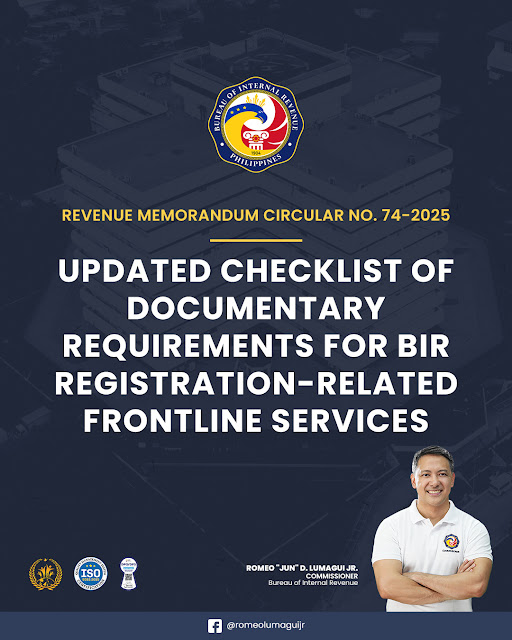7.22.2025
BIR MEMO 74-2025 - Narito po ang updated na checklist ng requirements para sa iba’t-ibang mga registration services ng BIR from BIR Commissioner Romeo Lumagui Jr
PABATID SA PUBLIKO
Full RMC No. 74-2025: https://bir-cdn.bir.gov.ph/BIR/pdf/RMC%20No.%2074-2025.pdf
Follow Commissioner Lumagui’s official accounts:
IG & Tiktok: @romeolumaguijr



















